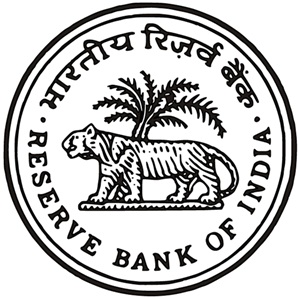Reserve Bank of India (RBI) has decided to keep its key interest rates unchanged in view of the current and emerging situations. The Monetary Policy Committee (MPC) at its meeting today decided to keep the policy repo rate under the liquidity adjustment facility (LAF) unchanged at 4.0 per cent.

Consequently, the reverse repo rate under the LAF remains unchanged at 3.35 per cent and the marginal standing facility (MSF) rate and the Bank Rate at 4.25 per cent.
The MPC also decided to continue with the accommodative stance as long as necessary to sustain growth on a durable basis and continue to mitigate the impact of Covid-19 on the economy, while ensuring that inflation remains within the target going forward.
These decisions are in consonance with the objective of achieving the medium-term target for consumer price index (CPI) inflation of 4 per cent within a band of +/- 2 per cent, while supporting growth.
RBI noted that since the MPC’s meeting in February, lingering effects of the slowdown in the global economy in Q4 of 2020 have persisted, although recent arrivals of high frequency indicators suggest that a gradual but uneven recovery may be forming.
“The much anticipated boost to economic activity from the vaccination rollouts is being somewhat held back by new mutations of Covid-19, second and third waves of infections across countries and unequal access to vaccines more generally,” RBI stated.
While wrld trade improved in Q4:2020 and January 2021, RBI said there are, however, concerns due to Covid-19-related fresh lockdowns and depressed demand in a few major economies, escalation in shipping charges and container shortages.
Inflation remains benign in major advanced economies (AEs), although highly accommodative monetary policies and large fiscal stimuli have added to concerns around market-based indicators of inflation expectations, unsettling bond markets globally.
In a few emerging market economies (EMEs), however, inflation is ruling above targets, primarily driven by firming global commodity prices. This has even prompted a few of them to raise policy rates.
Equity and currency markets have been turbulent with the increase in long-term bond yields and the steepening of yield curves. More recently, however, calm has returned and major equity markets have scaled new peaks in March, while currencies are trading mixed against a generally firming US dollar. With the bond markets sell-offs, EME assets came under selling pressure and capital outflows imposed depreciating pressures on EME currencies in March.
The second advance estimates for 2020-21 released by the National Statistical Office (NSO) on 26 February 2021 placed India’s real gross domestic product (GDP) contraction at 8.0 per cent during the year. High frequency indicators – vehicle sales, railway freight traffic, toll collections, goods and services tax (GST) revenues, e-way bills, and steel consumption – suggest that gains in manufacturing and services activity in Q3 of 2020-21 extended into Q4.
The index of industrial production slipped into marginal contraction in January 2021, dragged down by manufacturing and mining. Core industries also contracted in February. The resilience of agriculture is evident from foodgrains and horticulture production for 2020-
Headline inflation increased to 5.0 per cent in February after having eased to 4.1 per cent in January 2021. Within an overall food inflation print of 4.3 per cent in February, five out of twelve food sub-groups recorded double digit inflation. While fuel inflation pressures eased somewhat in February, core inflation registered a generalised hardening and increased by 50 basis points to touch 6 per cent.
Overall ;iquidity in the system remained largely in surplus in February and March 2021 with average daily net liquidity absorption of Rs5.9 lakh crore. Driven by currency demand, reserve money (RM) increased by 14.2 per cent (y-o-y) as on 26 March 2021. Money supply (M3) grew by 11.8 per cent as of 26 March 2021 with credit growth at 5.6 per cent.
Corporate bond issuances at Rs6.8 lakh crore during 2020-21 (up to February 2021) were higher than Rs6.1 lakh crore during the same period last year. Issuances of commercial paper (CPs) turned around since December 2020 and were higher by 10.4 per cent during December 2020 to March 2021 than in the same period of the previous year.
India’s foreign exchange reserves increased by $99.2 billion during 2020-21 to $577.0 billion at end-March 2021, providing an import cover of 18.4 months and 102 per cent of India’s external debt.
RBI expects the evolving CPI inflation trajectory is likely to be subjected to both upside and downside pressures. The bumper foodgrains production in 2020-21 should sustain softening of cereal prices going forward. While the prices of pulses, particularly tur and urad, remain elevated, the incoming rabi harvest arrivals in the markets and the overall increase in domestic production in 2020-21 should augment supply which, along with imports, should enable some softening of these prices going forward. RBI noted.























